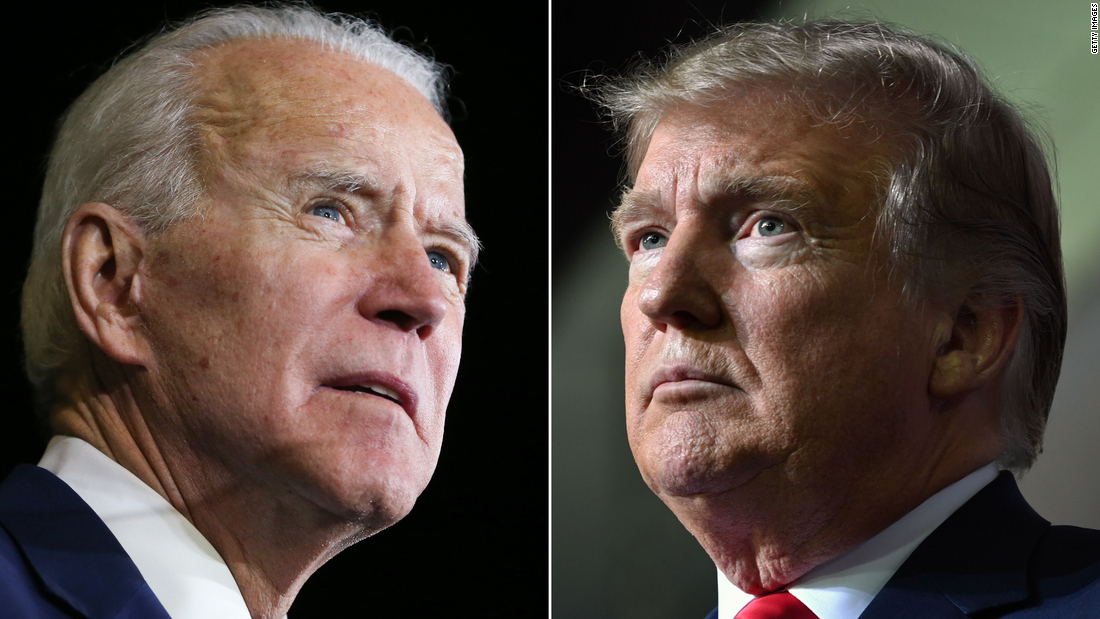Compared to previous CNN elections in each state, the polls held at the end of the campaign show little movement in the presidential race.
Studies show that Biden already has a broad advantage over those who voted, either by mail or by direct vote, with Trump leading by a wide margin among those who have not yet voted. The size of that constituency of later voters may dictate the outcome of the race.
In Arizona and Wisconsin, the poll results are almost identical to the recent high-quality referendum. The Arizona poll shows a race within the confines of the sample error, with Biden backing Trump with 46% and 50% support. In Wisconsin, Biden is in the lead, 52% behind him and 44% behind Trump.
The North Carolina result shows that Biden is slightly ahead of Trump by 51% to 45%, which is out of the 4 point sample error of the poll. A referendum in North Carolina suggests a slightly tighter race for the presidency than the average new referendum, although an NBC News / Mauritius college poll this week found Bitten with a narrow advantage.
In Michigan, the results suggest a wider difference than most referendums, with Fiden 53% to 41% for Trump, but the results for each candidate are within the range of the average estimated support poll error for that candidate.
In Michigan and Wisconsin, white voters make up a larger proportion of the population than in Arizona or North Carolina, and they are more relevant to supporting the Pita in Michigan and Wisconsin than in Arizona or North Carolina. College-graduated white voters in two northern states support Biden particularly widely, with 61% supporting the former vice president in both Michigan and Wisconsin, compared to half (50%) in Arizona and 51% in North Carolina. The majority of white voters who do not have a college degree support Trump, with his strong support in that group coming to North Carolina, where 64% support the president.
There are significant gender gaps in all four states, with 55% or more of women in each of these states supporting Biden, while men in North Carolina and Arizona split in favor of Trump and split equally between Michigan and Wisconsin.
Among the two defining issues of the 2020 campaign – the economy and the corona virus epidemic – are the differences in how voters will handle each candidate better. Biden is more credible in handling the corona virus outbreak in all four states, and Arizona has his narrow margin of 7-point margin in this regard. Voters in Arizona and North Carolina will often see the economy in Trump’s hands (54% of Trump to 43% of Biden in Arizona, 51% of Trump to 46% of Biden in North Carolina), and both candidates are in trouble in Michigan (49% of Trump to 48% of Biden) and Even Wisconsin (49% Biden to 48% Trump) are on Biden’s wide edge in overall options.
The majority of voters in all four states, however, did not approve of the way Trump handled his job as president, ranging from 51% in Arizona to 56% in Michigan.
In all four states, Trump supporters often cast ballots to show their support for the president. More than 7 out of 10 Trump voters in each poll say they vote for Trump more than Biden (79% in Wisconsin, 77% in Arizona and Michigan and 71% in North Carolina). Among Biden supporters, this is even more divisive. A majority in Wisconsin says their vote is for the former vice president (52%) rather than against Trump (43%), but the numbers are in Arizona (48% against Trump, 45% against Python), Michigan (47% against Python, 43% against Trump), and North Carolina ( 45% for Biden, 43% against Trump).
In all four states, Biden is the most sympathetic candidate and still one worthy of uniting the country. Voters in Michigan, North Carolina and Wisconsin say Biden has a clear plan for Trump to solve the country’s problems. In Arizona, voters are divided between two candidates. Voters in the three states of Arizona, North Carolina and Wisconsin were equally divided over who would protect Americans from harm. Voters in North Carolina and Michigan were divided over the question, while Trump had the advantage of being a tolerant and sharp candidate for the presidency in Arizona and Wisconsin.
All three Senate contests in these states were closely watched. In Arizona and Michigan, the polls show a democratic advantage. In Arizona, 52% are Democrat challenger Mark Kelly and 45% are Republican current Sen. Martha Maxley. In Michigan, 52% of Democrats are current sen. Gary Peters and 40% Republican challenger John James. In North Carolina, it is an equal race, 47% behind Democrat Call Cunningham and the current Sen. Republican. He has 44% support for Dillis.
North Carolina will also elect a governor this year, in which Democrat Gov. Roy Cooper has a clear 52% to 42% lead over his Republican challenger Dan Forrest.
CNN polls in Arizona, Michigan, North Carolina and Wisconsin were conducted by telephone from October 23 to 30 in random samples of approximately 1,000 adults in each state. It has 865 voters in Arizona, 907 voters in Michigan, 901 voters in North Carolina and 873 voters in Wisconsin. Results among potential voters have a margin of sample error of plus or minus 4.1 points in Arizona, 3.8 points in Michigan, 4.0 points in North Carolina and 3.9 points in Wisconsin. It is more common among subgroups.





